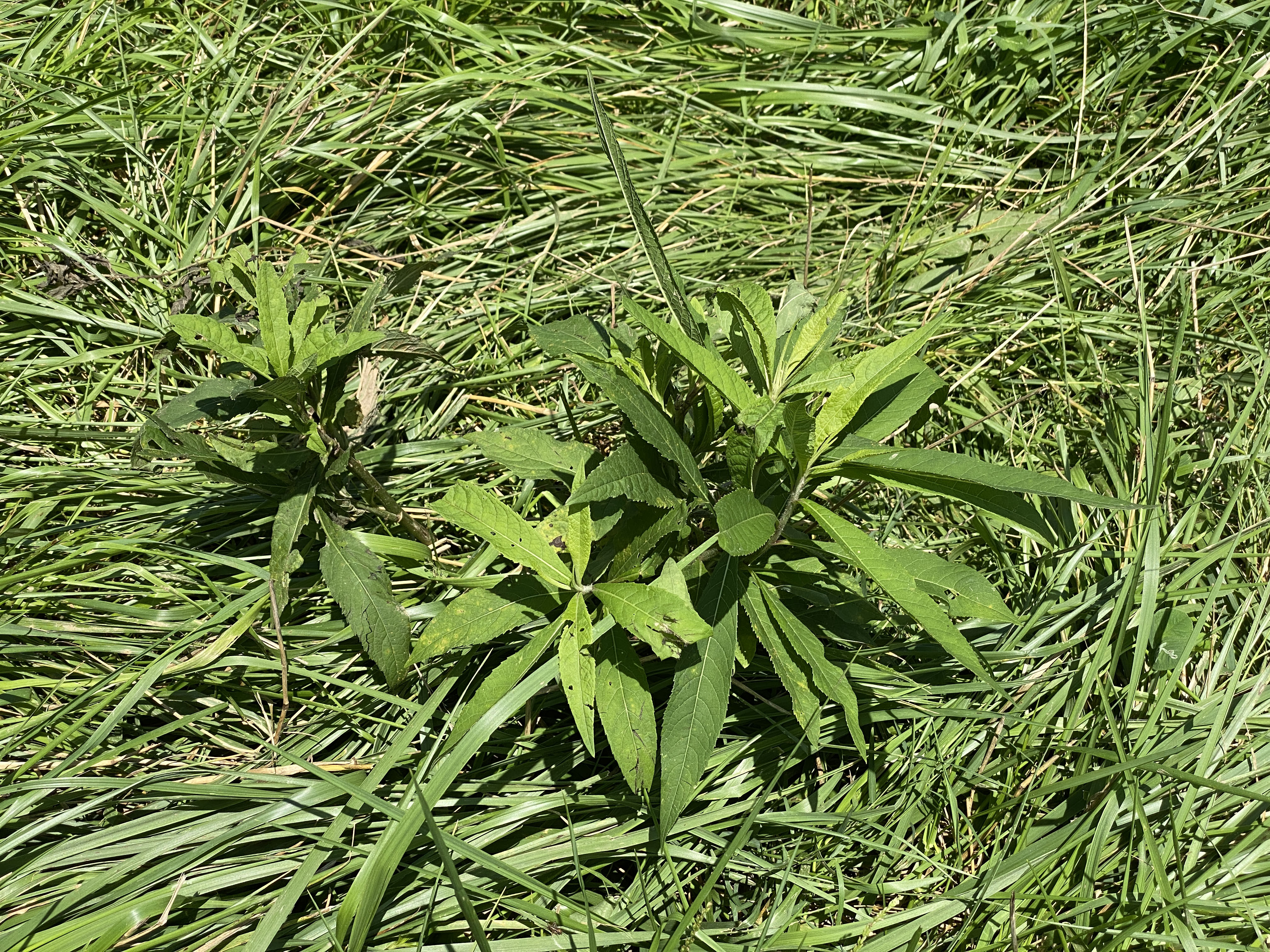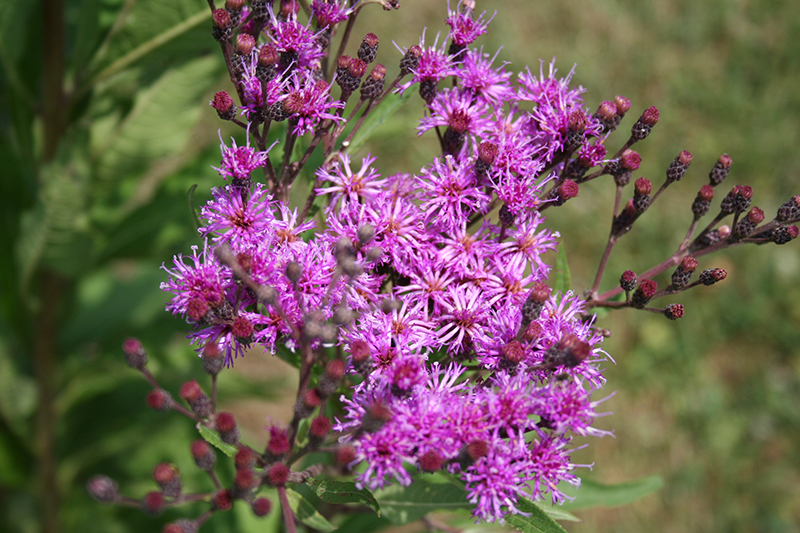Picture of the Week
10/3/2022
The Ironweeds
Marcelo Zimmer, Weed Science Program Specialist, Purdue University
Bill Johnson, Professor of Weed Science, Botany and Plant Pathology, Purdue University
Ironweeds are a familiar sight in Indiana pastures (Figure 1). They are often 3 to 5-foot tall with purple inflorescence (Figure 2 and 3), although they can reach heights of 10 feet tall. In a pasture that has been heavily grazed, they are often the only plant of substantial size left. The ironweeds are a group of native perennials that can be troublesome in pastures throughout the US. They belong to the genus Vernonia spp. One of the most common ironweeds found in the Midwest is tall ironweed, (also known as giant ironweed (Vernonia gigantea (Walter) Trel. ssp. Gigantean)1. For a breakdown of species found in Indiana see table 1.
Click image to enlarge
Table 1. A comparison of three Indiana ironweeds(2).
|
Name |
Height (ft) | Leaf width (in) | Leaf length (in) |
Pubescence |
Flowers |
|
Tall ironweed/ giant ironweed (Vernonia gigantea) |
5 to 10 | 0.5 to 1.5 | 4 to 12 | May have sparse hairs on the stem. Leaves can have fine short hairs on the underside of the leaf. | 0.17 to 0.25 inches wide, 15 to 30 flowered. Blooms generally July-September |
| Prairie ironweed (Vernonia fasciculata) | 2 to 6 | 0.17 to 0.3 | 3 to 6 | The leaves are almost hairless but may have some hair on both upper and lower surface. | Sept. 0.17 to 0.25 inches wide, 20-30 flowered. |
| Missouri ironweed (Vernonia missurica) | 3 to 5 | 0.5 to 1.5 | 3 to 6 | Stem covered with soft dense hairs. Leaf underside densely hairy on the underside of the leaves. | 0.17 to 0.5 inches wide, 30 to 60 flowered. |
The ironweeds can produce a large amount of seed, but seed production appears to be variable. Tall ironweed was reported to produce between 1460 to as much as 14,550 seeds per plant(3).
Mechanical Control
Control by mowing may be affected by mowing date, number of mowing events, and environmental conditions. In a study conducted in Missouri investigating mowing regimes of western ironweed, single mowing events often resulted in higher stands(4). In contrast, Western ironweed that was mowed early (May 20th) then mowed repeatedly whenever the regrowth reached 6 to 8 inches resulted in 19 to 87% stand reduction compared to the nontreated plots(4).
Chemical Control
Glyphosate applications have been reported to result in good to excellent levels of ironweed control(5,6). However, control with glyphosate may provide variable results depending on environmental conditions. In a study by Peters and Lowance (1979) ironweed control was reported to range from 2% to 88% depending on year(6). The authors attributed low control to rainfall and the poor growing conditions during those years. Glyphosate requires weeds to be actively growing and translocating photosynthates efficiently for increased herbicide efficacy on perennial weeds. In pastures, glyphosate can only be applied as a directed application, such as a wiper application or as a spot application to prevent injury to desired grasses and legumes.
Herbicides containing the active ingredients dicamba [Banvel, Clarity], 2,4-D [many], and triclopyr [Garlon 4 Ultra, Garlon 3A] were investigated for tall ironweed control(3). Dicamba alone resulted in only ≤76% control of tall ironweed and also showed >81% regrowth. Triclopyr alone or triclopyr plus 2,4-D resulted in >91% control. Furthermore, triclopyr alone or with 2,4-D resulted in less than 39% regrowth of the original stands.
Crossbow, a premix of triclopyr and 2,4-D, can be used to control tall ironweed at 2 qt/A broadcast or in a hand-held applicator at 1% v/v. Milestone at 5 to 7 oz/A or ForeFront at 2 to 2.6 pt/A will also have good activity on ironweed(5).
References:
- USDA Plant Database. Accessed October 02, 2020. [https://plants.sc.egov.usda.gov/java/]
- Britton N and Brown A (1970) An Illustrated Flora of The Northern United States and Canada. Vol 3:350-353
- Mann RK, Rosser SW, and Witt. WW (1983) Biology and Control of Tall Ironweed (Verona altissima). Weed Science 31:324-328
- Peters EJ and Lowance SA (1978) Effects of Multiple Mowing on Western Ironweed (Vernonia baldwinii) and Gray Goldenrod (Solidago nemoralis). Weed Science 26:190-192
- Loux MM, Doohan D, Dobbels AF, Johnson WG, Young BG, Zimmer M, Hager A (2022) 2022 Weed Control Guide for Ohio, Indiana, and Illinois. [WS-16 p. 186]
- Peters EJ and Lowance SA (1979) Herbicides for Renovation of Pastures and Control of Tall Ironweed (Vernonia altissima). Weed Science 27:342-345.




